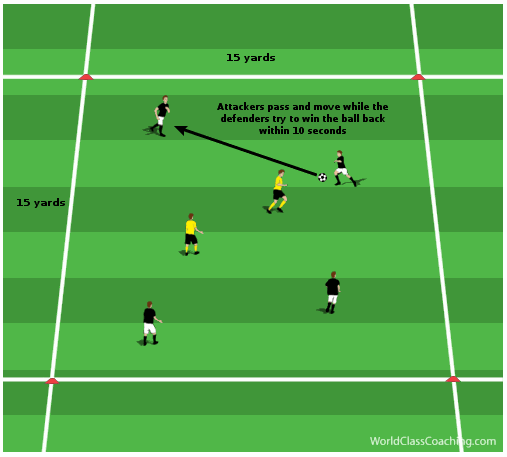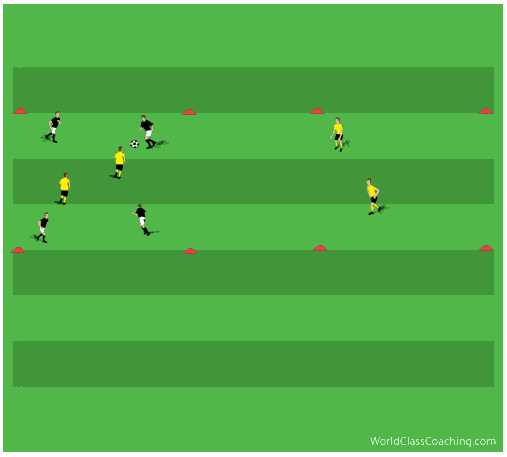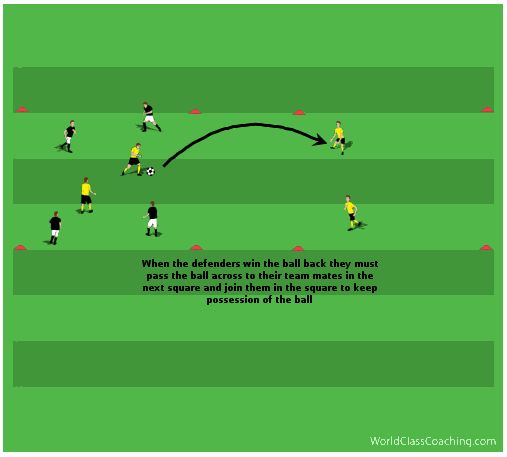By Jebreel Bubtana, BRASA, Brazilian Soccer Academy
If you like to have your team play a high pressure game and win the ball back quickly when they lose it, then this is a great way to develop this. Playing a high pressure game can be very successful during games but must be worked on regularly during practices to ensure that the players are physically conditioned to be able carry this tactic out.
The exercise starts with four attackers and two defenders in a 15x15 yards square as shown below in figure 1.
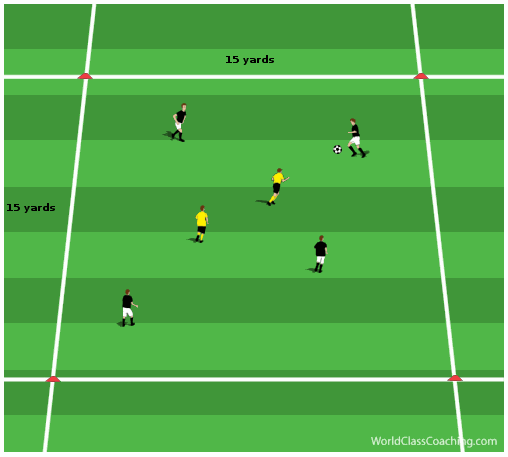
The four attackers try to keep the ball away from the two defenders who have 10 seconds to try and win the ball back (figure 2). If the attackers keep the ball for 10 seconds then they are awarded a point and if the defenders win the ball within 10 seconds then they earn themselves a point. The aim is that the defenders work together to pressure the ball and either win the ball back or force the ball out of the square. As the defenders are in a numbers down situation, they must work very hard to win possession of the ball and it is this work ethic that is needed to win the ball back in a real game situation.
This is a great way to develop the understanding that the ball must be won back as quickly as possible in order to avoid an attack against your team. You can increase the pressure on the defenders by reducing the time that they have to win the ball back. You can also change the situation slightly so that the defenders start with the ball. It will be difficult for them to keep the ball for long as they will be heavily outnumbered. However, when the defenders lose the ball, the timer starts and they must win the ball back within 10 seconds. This is a good development as it emphasizes the fact that the ball must be won back quickly when lost.
Progression:
You can progress this exercise to include the transition from defence to attack and so making it more game realistic. There are now two 15x15 squares with a 10 yard gap between them as shown below. One square will start with a 4v2 like the previous part of the exercise and the second square will contain two players who are on the same team as the two defenders in the first square (figure 3).
The four attackers keep the ball away from the two defenders, who try to win the ball back as quickly as possible. Though the time limit for the defenders to win the ball is no longer in force, it is important to keep emphasizing winning possession of the ball quickly to the defenders (in a real game situation, it will result in the attacking team not be able to construct an attack). The attackers get a point for every time they reach 10 passes without the defenders winning the ball (figure 4).
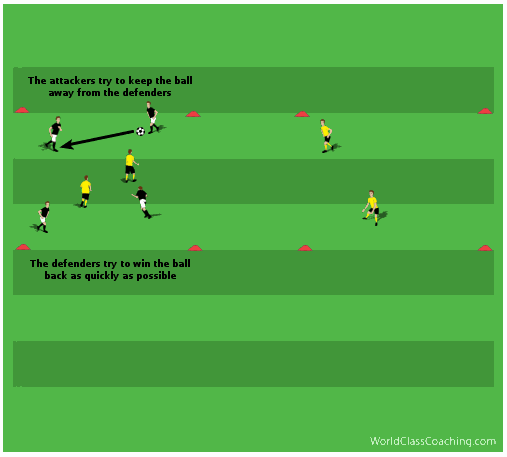
When the defenders win the ball from the attackers, they must pass it across to their two team mates waiting in the other square, which earns their team a point (figure 5). As soon as they have passed the ball across, they must join their team mates in the square and keep possession of the ball.
Two of the players from the team that just lost the ball will now sprint across to the other square to try and win the ball back from the new attackers (figure 6). If they win the ball back, then they pass the ball back to their team mates waiting in the original square.
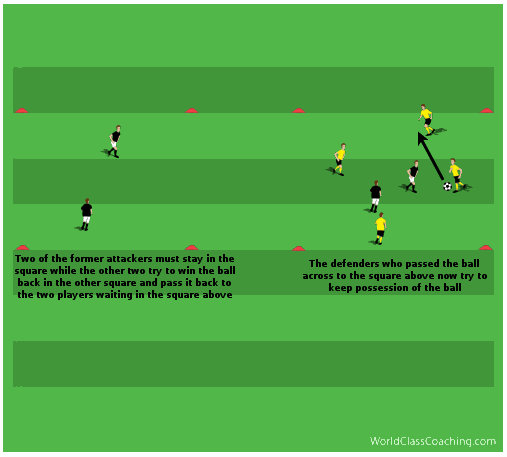
When you are coaching this exercise, make sure that you have plenty of soccer balls with you so that if the ball goes out of play, you can restart the game again quickly. This will keep the intensity high and work on the player’s anaerobic conditioning.
Coaching Points:
- The defenders must work hard to win the ball back, applying pressure on the ball as quickly as possible to force the attackers into a mistake.
- Once the defenders win the ball, they must keep their composure and get their head up to see where their team mates are in the other square. This will enable them to make a good pass to their team mate. The idea is that when you have worked so hard to win the ball back, that you do not waste the possession with a poor pass.
- In the transition between defence and attack, the players must sprint as fast as they can to the next square to support their team mates and provide them with extra options to pass to.
- In the transition between attack and defence, two players from the team that just lost the ball must sprint across to pressure the team in possession. This quick pressure is what will hopefully result in winning the ball back quickly.
Jebreel Bubtana
NSCAA Advanced National Diploma
NSCAA Director of Coaching Diploma

